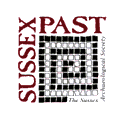Sussex Archaeological Collections: Relating to the history and antiquities of the counties of East and West Sussex
Sussex Archaeological Society, 2000. (updated 2022) https://doi.org/10.5284/1000334. How to cite using this DOI
Data copyright © Sussex Archaeological Society unless otherwise stated
This work is licensed under the ADS Terms of Use and Access.
Primary contact
Jaime
Kaminski
Sussex Archaeological Society
Barbican House
169 High Street
Lewes
BN8 1YE
Resource identifiers
- ADS Collection: 285
- DOI:https://doi.org/10.5284/1000334
- How to cite using this DOI
The Georgian provincial builder-architect and architect: Amon and Amon Henry Wilds of Lewes and Brighton, c. 1790-1850.
by SUE BERRY
Provincial builders and architects designed the majority of urban buildings during the eighteenth and first half of the nineteenth centuries and therefore deserve study. Some, such as James Essex (1722-84), Owen Browne Carter (1806-1859), the Bastard family of Blandford and the Smiths of Warwick, had substantial influence within an area.1 From the later eighteenth century, provincial builder-architects and architects faced increasing competition from men trained in architectural practices in London who were particularly interested in the larger, more prestigious schemes. The Wilds moved from Lewes to Brighton when the resort was expanding rapidly; it was already far ahead of other resorts in scale and social status. Its growth attracted Charles Barry and other well-connected London architects, who were competing against each other as well as against provincial practitioners. Seen in this competitive context, self-taught provincial architects such as the Wilds were remarkably successful.





